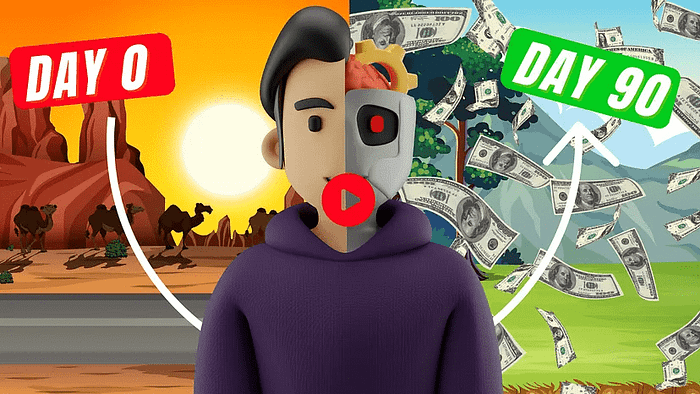How to Start a Profitable Print-on-Demand Business on Pinterest
Stepping into the world of a Pinterest print-on-demand business feels like unlocking a hidden treasure chest brimming with opportunities for creative entrepreneurs eager to turn their designs into passive income e-commerce streams. I recently observed someone skillfully navigate this vibrant platform to showcase their print-on-demand products, and it was nothing short of inspiring to witness how they transformed eye-catching visuals into a flourishing online venture. Pinterest isn’t just a place for pinning recipes or dream home decor—it’s a powerhouse visual search engine where buyers actively hunt for unique products like wall art, t-shirts, and mugs. By following their strategic approach, I learned that anyone with a knack for design and a sprinkle of patience can carve out a profitable niche in this space. Their journey revealed that Pinterest’s buyer-driven audience and product-focused features make it a perfect match for print-on-demand sellers aiming for success. In this guide, I’ll walk you through the exact steps they took to harness Pinterest’s potential for a thriving print-on-demand business. From setting up a store connection to crafting irresistible pins, you’ll see how this platform can become your ticket to e-commerce growth. Let’s dive into the lessons I gathered from their impressive process.
We strongly recommend that you check out our guide on how to take advantage of AI in today’s passive income economy.
Table of Contents
The Power of Pinterest for Print-on-Demand
I couldn’t help but marvel at the sheer numbers this person achieved when they shared insights about a wall art store racking up 1.8 million monthly viewers on Pinterest. They pointed out how the account cleverly linked pins to both their own verified store and their Etsy profile, creating a seamless flow of traffic to their products. Using a tool called Alura, they revealed that the Etsy sales alone topped $700,000—an incredible feat that doesn’t even account for their standalone store’s earnings. It struck me how this Etsy + Pinterest strategy amplified their reach, proving that Pinterest can be a game-changer for print-on-demand sellers. Another example they shared was a Shopify-based t-shirt store pulling in 2.6 million views on the platform, further solidifying Pinterest’s potential for diverse products. What stood out most was how Pinterest operates as a visual search engine, making it ideal for showcasing stunning print-on-demand designs to an audience already in buyer mode. People flock to Pinterest for inspiration, often with wallets ready to spend on exactly what you’re selling. This platform’s ability to prioritize product pins in search results means your designs can sit front and center for eager customers.
Why Pinterest Stands Out for Your Business
Watching this person explain Pinterest’s unique edge gave me a newfound appreciation for its role in a print-on-demand with Pinterest strategy. They highlighted how searching for something like “t-shirts” on Pinterest yields a flood of product pins at the top—direct links to items ready for purchase. Even non-product pins often come with little dots that Pinterest automatically adds, linking to similar items across e-commerce sites. This feature alone drives massive traffic to online stores, making it a goldmine for print-on-demand businesses looking to capture buyer intent. It became clear that Pinterest isn’t just a social platform; it’s a marketplace where visuals reign supreme. The person emphasized that this setup gives print-on-demand sellers an unparalleled opportunity to showcase their creativity. With users actively seeking ideas for things they want to buy, your products can meet them right at the point of inspiration. It’s like setting up a shop window in the middle of a bustling market—except this market has millions of visitors daily.
Step 1: Connecting Your Store to Pinterest
One of the first lessons I absorbed from their process was the simplicity of connecting a print-on-demand store to Pinterest. They explained that if you’re running your business on Etsy, your product listings automatically become “Product Pins” on Pinterest—no extra verification needed. These pins pull in details like price, title, and description directly from your Etsy store, making it effortless to display your offerings. For Shopify users, they walked me through the process of verifying a store using the free Pinterest app available in Shopify’s app marketplace. It’s as simple as installing the app and linking your Pinterest business account, which they stressed should always be a business account for access to analytics and ads. If you don’t already have a Pinterest account, setting one up as a business account is free and takes just a few minutes. This foundational step ensures your Pinterest print-on-demand business has a direct pipeline to showcase products and drive sales. It was fascinating to see how seamlessly Pinterest integrates with these platforms to kickstart your journey.
Step 2: Leveraging Pinterest Trends and Keywords
The next insight I gained was the importance of tapping into Pinterest trends and keywords—a critical piece of any Pinterest print-on-demand business strategy. They navigated to trends.pinterest.com, a tool that reveals what’s hot in your niche across different regions and timeframes. For instance, they showed how selecting the United States as a target market (even if you’re based elsewhere, like Australia) helps you align with your audience’s seasonal interests, like Christmas-themed pins that surge in visibility months in advance. They advised posting pins 2-3 months ahead to give Pinterest’s algorithm time to index and rank them effectively. This tool also helps uncover keywords to weave into your product descriptions, titles, and hashtags, boosting discoverability. What impressed me was how they used trends to inspire new print-on-demand designs, ensuring their offerings stayed fresh and relevant. Studying top-performing pins in their niche gave them a blueprint for what resonates with Pinterest users. It’s a methodical way to ensure your Pinterest print-on-demand business aligns with demand.
Step 3: Boosting Reach with Pinterest Ads
Their approach to Pinterest ads opened my eyes to a faster route for scaling a Pinterest print-on-demand business. They explained that while organic growth is powerful, promoted pins offer a targeted and cost-effective way to get your designs in front of the right audience. Pinterest ads allow you to select keywords and geographic locations, ensuring your products reach users actively searching for them—like showing t-shirt pins only to U.S. customers if that’s your shipping zone. They noted that these ads are still relatively affordable compared to other platforms, making them a smart investment for quick visibility. What intrigued me was how ads can accelerate brand exposure while organic efforts build over time. They also mentioned using a global print-on-demand service like Gelato to bypass shipping limitations, fulfilling orders in 32 countries with low costs and fast delivery. This strategy ensures your Pinterest print-on-demand business can scale without geographic constraints. It’s a brilliant way to complement organic growth with paid precision.
Step 4: Designing Click-Worthy Pinterest Pins
Watching them craft Pinterest pins was like observing an artist at work—pin design truly makes or breaks your Pinterest print-on-demand business success. They stressed that quality trumps quantity, as pins need high engagement, saves, and clicks to drive traffic. From years of experience, they shared tips like using high-resolution images (at least 1000×1500 pixels) to avoid reduced distribution by Pinterest’s algorithm. Adding bold text overlays at the top of pins ensures readability on mobile devices, where most users browse. They often created collage-style pins showcasing multiple products, a format that performs well for e-commerce stores. Tools like Canva became their go-to for designing professional pins, thanks to its free templates and features like background removal in the paid version. Scheduling pins directly in Canva or Pinterest’s native scheduler also streamlined their workflow. This meticulous attention to design ensures their Pinterest print-on-demand business captures attention in a crowded feed.
Step 5: Building a Pinterest Showroom
Their approach to organizing a Pinterest profile into a virtual showroom was a masterclass in branding for a Pinterest print-on-demand business. They created boards for different product categories—like wall art, t-shirts, and mugs—each filled with eye-catching mockups and designs linking directly to product pages. This setup makes it easy for users to browse and find exactly what they want, mimicking a storefront experience. They recommended using vertical mockups, which double as pins, and tools like Placeit for creating high-quality visuals of products in real-life settings. Placeit’s video mockups were a standout, adding dynamic pins that grab attention on Pinterest. They also suggested starting a blog tied to your store to diversify linkable URLs and create more pinning opportunities. Consistency, they emphasized, is key—posting one pin daily (or scheduling in batches) outperforms sporadic bulk uploads. This structured approach ensures your Pinterest print-on-demand business feels polished and professional to every visitor.
Final Thoughts on Consistency and Patience
The biggest takeaway from observing their journey was the need for patience and consistency in a Pinterest print-on-demand business. They cautioned against expecting instant results, explaining that Pinterest, as a search engine, takes time to index and rank your pins and boards—sometimes months. Yet, the long-term payoff can be immense, as seen in their examples of stores gaining millions of views and hundreds of thousands in sales. They advised maintaining a steady pinning schedule, even if it’s just one pin a day, and using schedulers like Pinterest’s native tool or third-party options like Tailwind to plan ahead. What resonated most was their encouragement to stick with it, even if early days feel slow. Building a passive income e-commerce stream through Pinterest isn’t a sprint; it’s a marathon that rewards those who stay the course. Their success stories—like the wall art store and t-shirt shop—prove that a well-executed Pinterest print-on-demand business can yield incredible results with time and dedication.

We strongly recommend that you check out our guide on how to take advantage of AI in today’s passive income economy.




